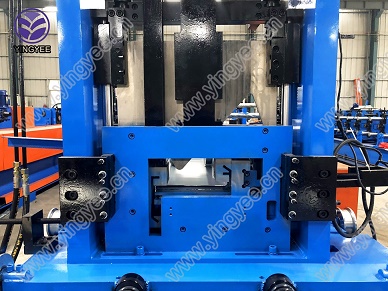
Understanding Metal Roll Forming Machines
Metal roll forming is a highly efficient manufacturing process used to produce complex metal profiles by continuously bending metal sheets. This innovative technique enables manufacturers to create a wide variety of components for industries such as construction, automotive, and appliances. At the heart of this process lies the metal roll forming machine, an indispensable tool that transforms initial metal sheets into finely shaped profiles through sequential bending.
The Process of Roll Forming
The metal roll forming process begins with a flat sheet or strip of metal, typically made from materials such as steel, aluminum, or copper. The sheet enters the machine and passes through a series of rollers that gradually bend it to the desired shape. Each roller is meticulously designed to apply precise pressure at specific angles, allowing the sheet to maintain its structural integrity while achieving the desired profile.
The process can be customized to produce a wide variety of shapes, from simple channel sections to complex geometric profiles. The advantage of roll forming is its ability to produce long lengths of uniform product with minimal waste, making it an efficient option for bulk manufacturing.
Advantages of Metal Roll Forming Machines
1. High Production Efficiency Metal roll forming machines are engineered for high-speed operation, enabling manufacturers to produce large volumes of components in a short time. The continuous nature of the process means that once set up, these machines can run for extended periods with little downtime, significantly increasing productivity.
2. Precision and Consistency The automated nature of roll forming ensures that each piece produced maintains a high level of precision and consistency. This is crucial in industries where exact measurements are necessary, such as in construction for structural components.

3. Versatility Roll forming machines can be configured to produce a wide range of profiles, making them suitable for various applications across multiple industries. Whether manufacturing roofing panels, framing, or custom shapes for appliances, these machines can adapt to meet diverse production needs.
4. Material Conservation One of the most significant advantages of the roll forming process is its efficiency in material usage. The sequential bending technique minimizes waste, as the process optimally utilizes the metal sheet's dimensions.
5. Low Labor Costs Once set up, roll forming machines require less manual intervention compared to traditional metal processing methods. This trait not only reduces labor costs but also allows workers to focus on quality control and other critical tasks.
Applications of Metal Roll Forming Machines
Metal roll forming machines find applications in a variety of sectors. In the construction industry, they are used to create roof trusses, steel studs, and various other components that are integral to building structures. The automotive industry utilizes roll forming for producing body parts, frames, and support structures that require high strength and durability while being lightweight.
In appliance manufacturing, roll formed profiles are commonly used for the construction of frames and supports in refrigerators, ovens, and other household devices. Additionally, the wind and solar energy sectors are increasingly adopting roll forming for structural components of energy systems, reflecting the technology's adaptability to new market demands.
Conclusion
The evolution of metal roll forming machines has revolutionized how industries produce metal profiles, enhancing efficiency, precision, and flexibility. As manufacturing demands continue to grow, these machines play a crucial role in meeting modern production standards. With decreasing material waste and increasing automation, metal roll forming machines not only contribute to cost-effective manufacturing but also support sustainable practices by maximizing the use of raw materials. For businesses looking to improve their production capabilities, investing in a metal roll forming machine is a strategic move that aligns with contemporary manufacturing trends.